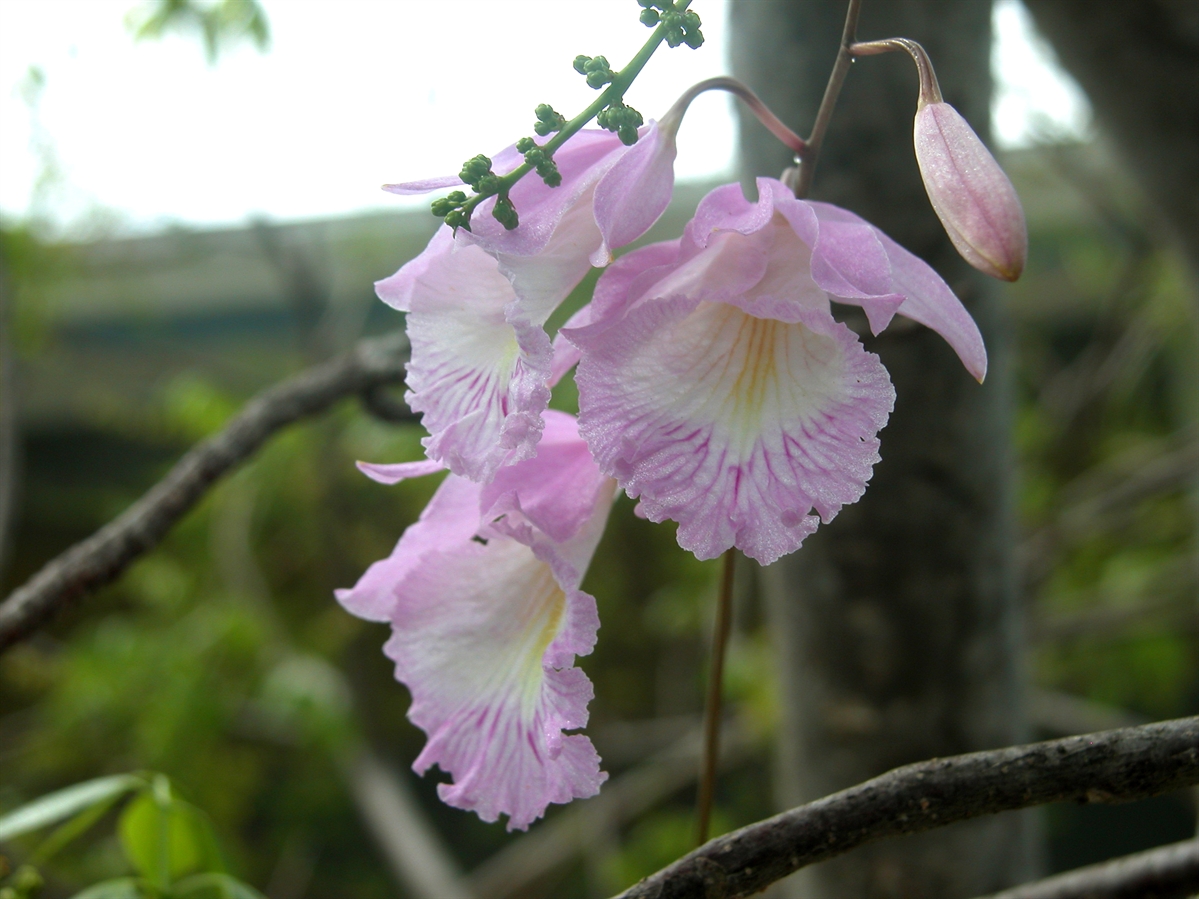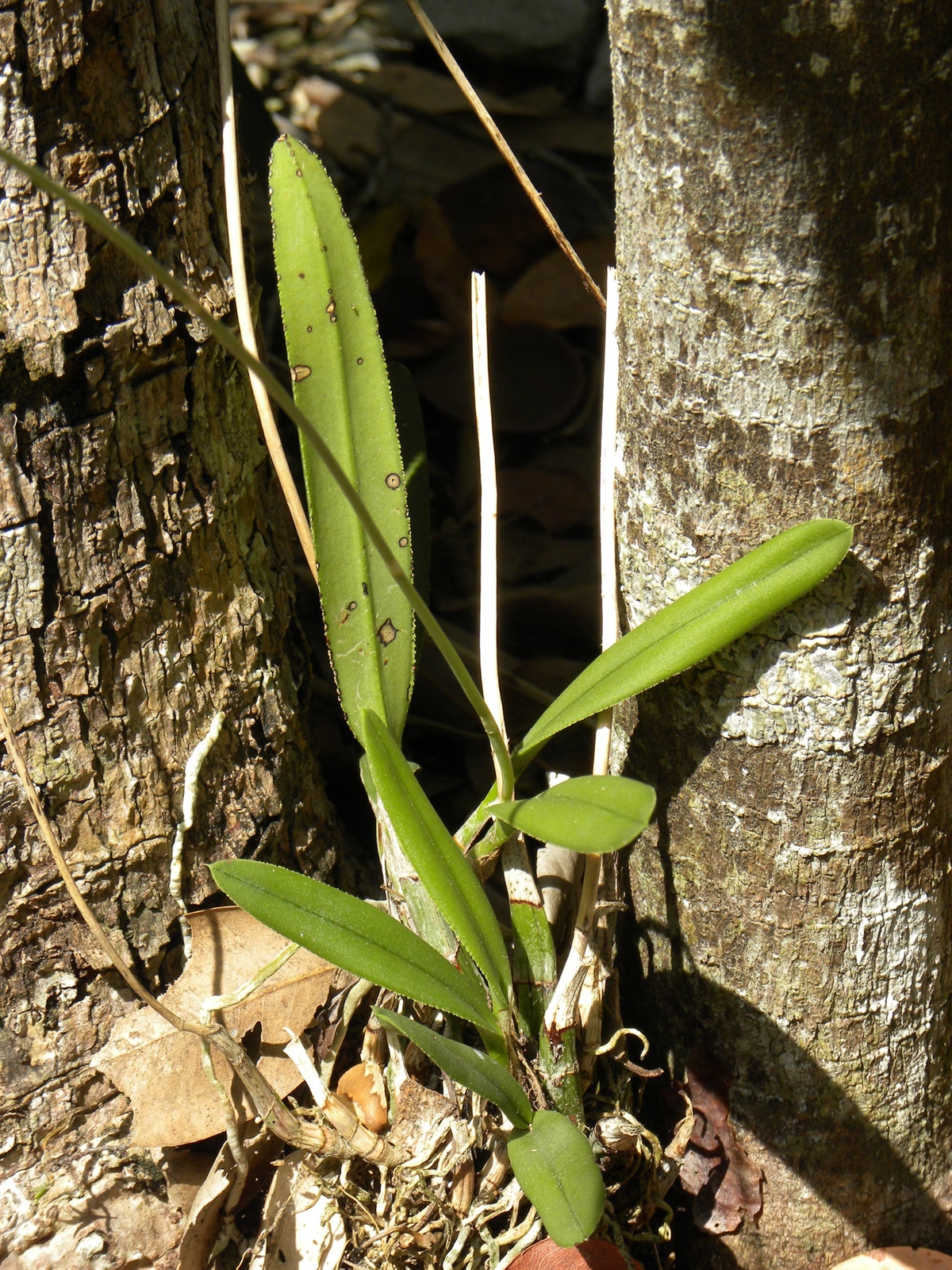Habit: Broughtonia lindenii grow as an epiphyte on trees. It produces a very short rhizomatous stem that is covered with secondary stems that are expanded to form elongate pseudobulbs up to 12 cm in length (typically much shorter). From the top of the pseudobulb 1 flattened linear leaf emerges that is up to 10 cm in length. The leaf margin is dentate-serrate.
The complete, perfect, zygomorphic flowers are arranged in few flowered panicle/racemes up to 60 cm in height and contain 1-6 flowers. The flowers have bracts. The calyx has 3 pink, unfused sepals. The corolla has 3 pink petals with 1 forming the labellum. The labellum is pink with 5 yellow lamellae, with purplish lines towards the front edge. The sides of the labellum enroll to form a tube around the column. The white column has 2 ear-like appendages at its base. The ovary is inferior. The fruit is a 3 lobed/sided hanging capsule at maturity up to 10 cm in length that opens along six suture lines and hangs allowing wind to assist in seed dispersal.
Habitat: Broughtonia lindenii grows in trees and shrubs in Dry Broadleaf Evergreen Formation – Shrublands (scrubland coppice) and in mangrove areas.
Distribution: Broughtonia lindenii occurs in the central and northern islands groupings of the Lucayan Archipelago as well as Cuba.
Medicinal/Cultural/Economic usage: While there are no medicinal uses of Broughtonia lindenii like all orchids they are prized for their beautiful flowers.
ALL orchids are protected internationally by the Convention on the International Trade of Endangered Species (CITES) and should not be collected from the wild.



